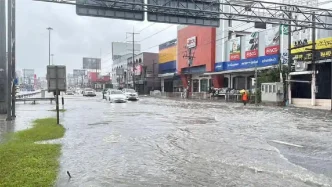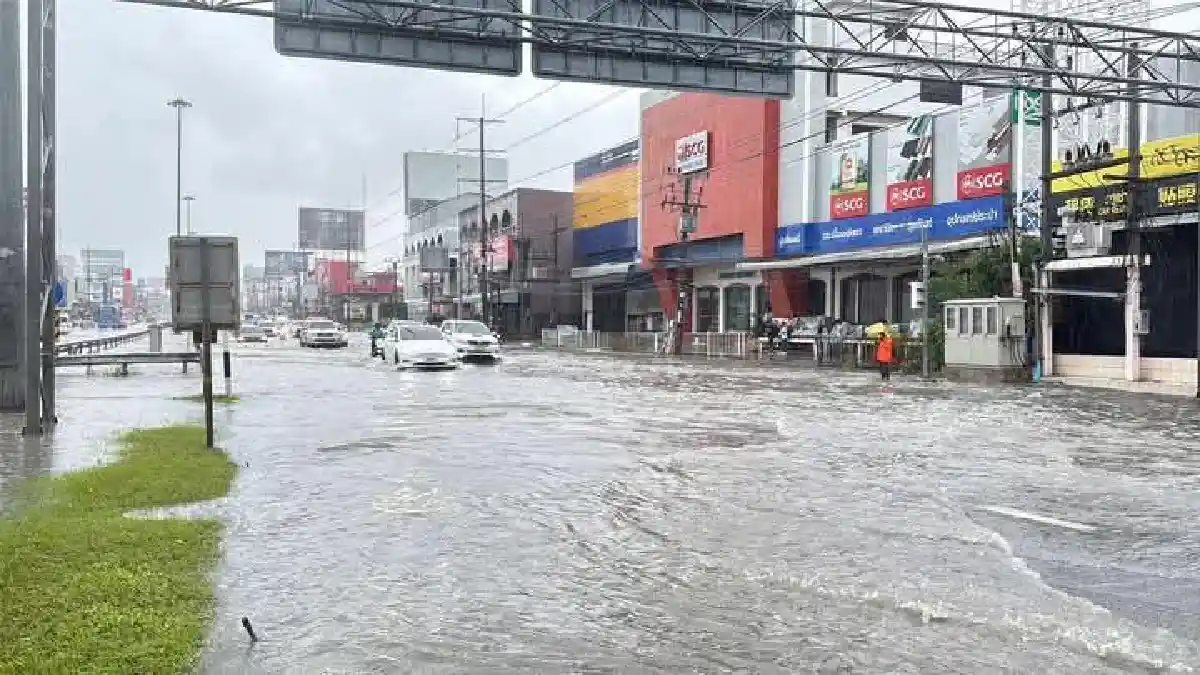Thailand is on high alert as 33 provinces face the imminent threat of flash floods, forest runoff, and mudslides this week, with authorities issuing urgent warnings and mobilizing resources to mitigate the impact of severe weather conditions. From July 6 to 12, 2025, the nation’s northern, northeastern, central, and southern regions are expected to bear the brunt of heavy rainfall, prompting the government to activate emergency protocols and prepare for potential disasters.
Urgent Warnings and Preparations
On Monday, Sasikarn Wattanachan, Thailand’s Deputy Government Spokesperson, confirmed the gravity of the situation, relaying critical updates from the Department of Disaster Prevention and Mitigation (DDPM). The agency has identified high-risk zones across multiple regions, urging local authorities to remain vigilant for sudden inundations, stagnant water in low-lying areas, and reservoirs nearing or exceeding 80% capacity. Additionally, fluctuating water levels in the Mekong River, a vital waterway bordering several provinces, have raised concerns about widespread flooding.
The DDPM has instructed all relevant agencies in at-risk areas to maintain round-the-clock readiness. Provincial and regional disaster prevention centers are tasked with closely monitoring weather patterns, particularly in areas that have recorded over 90 millimeters of rainfall within a 24-hour period or have a history of recurrent flooding. Immediate actions include inspecting and reinforcing flood barriers, clearing obstructions in water channels, and managing water systems to ensure efficient flow from source to sea.
High-Risk Provinces and Reservoirs Under Scrutiny
Among the provinces flagged for heightened monitoring are Lampang, Nan, Sakon Nakhon, Kalasin, Trat, Surat Thani, and Krabi, where medium and small-sized reservoirs are already at or above 80% capacity. Authorities have initiated urgent water drainage operations to prevent overflows as more rainfall is forecasted. The potential for reservoirs to breach poses a significant risk to surrounding communities, with the DDPM emphasizing the need for swift and coordinated responses.
Provinces along the Mekong River, including Chiang Rai, Loei, Nong Khai, Bueng Kan, Nakhon Phanom, Mukdahan, Amnat Charoen, and Ubon Ratchathani, face additional challenges. Accumulated rainfall in the upper regions of Laos is expected to swell the river, increasing the likelihood of flooding in these border areas. The Cell Broadcast Service (CBS), a critical alert system, is fully operational across all affected regions, ready to deliver real-time warnings to residents and officials alike.
Protecting Natural Attractions and Communities
Beyond infrastructure and water management, the government is taking steps to safeguard Thailand’s natural tourist attractions, such as waterfalls and caves, which are particularly vulnerable during heavy rains. Authorities have been directed to close these sites immediately if risks emerge, prioritizing public safety over tourism revenue. This proactive measure reflects lessons learned from past incidents where sudden flooding trapped visitors in remote areas.
The memory of recent floods, such as those witnessed in Chiang Mai in October 2024, looms large. Images of residents wading through chest-deep water, some carrying pets on makeshift rafts, underscored the human toll of such disasters. While no specific incidents have been reported yet in this current alert period, the government is keen to avoid a repeat of such scenes by ensuring preparedness at every level.
Broader Implications of Severe Weather
The threat of flooding extends beyond immediate safety concerns, with potential long-term impacts on Thailand’s agriculture, economy, and infrastructure. The northern and northeastern regions, often referred to as the country’s rice bowl, are particularly vulnerable to crop losses if fields remain submerged for extended periods. Smallholder farmers, who form the backbone of rural economies, could face devastating setbacks, exacerbating existing challenges of debt and market instability.
In urban centers like Bangkok, which has a history of severe flooding, the risk of economic disruption is equally significant. The 2011 floods, which inundated parts of the capital and caused billions of dollars in damages, remain a stark reminder of the city’s vulnerability. While flood defenses have since been bolstered, low-lying areas and informal settlements on the city’s outskirts remain at risk, particularly if drainage systems are overwhelmed by the anticipated downpours.
Regional Context and Climate Challenges
Thailand’s current predicament is part of a broader pattern of extreme weather events across Southeast Asia, driven by climate change and seasonal monsoon patterns. Neighboring countries, including Laos and Vietnam, are also grappling with heavy rainfall and rising river levels, highlighting the interconnected nature of the region’s environmental challenges. The Mekong River, which sustains millions of livelihoods across multiple nations, is a focal point of concern as upstream rainfall in Laos directly impacts downstream communities in Thailand.
Experts have long warned that climate change is intensifying the frequency and severity of such events, with warmer temperatures contributing to heavier rainfall and unpredictable weather patterns. For Thailand, adapting to these changes requires not only immediate disaster response measures but also long-term investments in resilient infrastructure, sustainable water management, and community education on flood preparedness.
Government and Community Response
The Thai government’s swift activation of emergency protocols signals a commitment to minimizing loss of life and property. The DDPM’s coordination with local authorities and use of technology like the Cell Broadcast Service are crucial steps in ensuring timely communication. However, the effectiveness of these measures will depend on ground-level implementation, particularly in remote or underserved areas where resources and infrastructure may be limited.
Community resilience will also play a vital role. In provinces with a history of flooding, many residents have developed coping mechanisms, from elevating homes to stockpiling emergency supplies. Yet, the scale of the current alert—spanning 33 provinces—underscores the need for collective action and government support to protect the most vulnerable populations, including the elderly, children, and those in low-income households.
Looking Ahead: Uncertainty and Preparedness
As Thailand braces for a week of severe weather, the nation watches anxiously to see how events will unfold. The government’s proactive stance offers hope, but the sheer scope of the alert raises questions about whether resources and response mechanisms will hold under pressure. With rainfall expected to persist through July 12, the coming days will test the country’s disaster preparedness and its ability to safeguard communities from nature’s wrath.
For now, residents in high-risk areas are urged to stay informed, heed official warnings, and take necessary precautions. As the monsoon season continues, the balance between immediate response and long-term adaptation remains a critical challenge for Thailand and the wider Southeast Asian region.
















